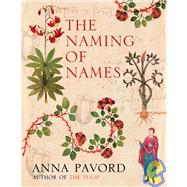
What is included with this book?
| Introduction | p. 1 |
| In the Beginning | p. 21 |
| All Men By Nature Desire to Know | p. 44 |
| The Alexandrian Library | p. 55 |
| Pliny the Plagiarist | p. 62 |
| The Medicine Men | p. 71 |
| Juliana's Book | p. 82 |
| The Arab Influence | p. 93 |
| Out of the Black Hole | p. 109 |
| The Image Makers | p. 125 |
| Theophrastus Reborn | p. 143 |
| Brunfels's Book | p. 161 |
| The Irascible Fuchs | p. 175 |
| In Italy | p. 205 |
| The First Botanic Garden | p. 221 |
| The Long-Nosed Nit-Picker | p. 243 |
| Weaving the Web | p. 252 |
| Protestants Prevail | p. 272 |
| Gesner's Masterpiece | p. 285 |
| New Pastures | p. 294 |
| Plantin's Team | p. 313 |
| The Last of the Herbals | p. 331 |
| English Achievements | p. 347 |
| The American Connection | p. 359 |
| The Beginning of the End | p. 372 |
| Epilogue | p. 395 |
| Chronology | p. 405 |
| Cast List | p. 417 |
| Notes | p. 425 |
| Bibliography | p. 439 |
| Acknowledgements | p. 449 |
| List of Illustrations | p. 451 |
| Index | p. 457 |
| Table of Contents provided by Ingram. All Rights Reserved. |
The New copy of this book will include any supplemental materials advertised. Please check the title of the book to determine if it should include any access cards, study guides, lab manuals, CDs, etc.
The Used, Rental and eBook copies of this book are not guaranteed to include any supplemental materials. Typically, only the book itself is included. This is true even if the title states it includes any access cards, study guides, lab manuals, CDs, etc.